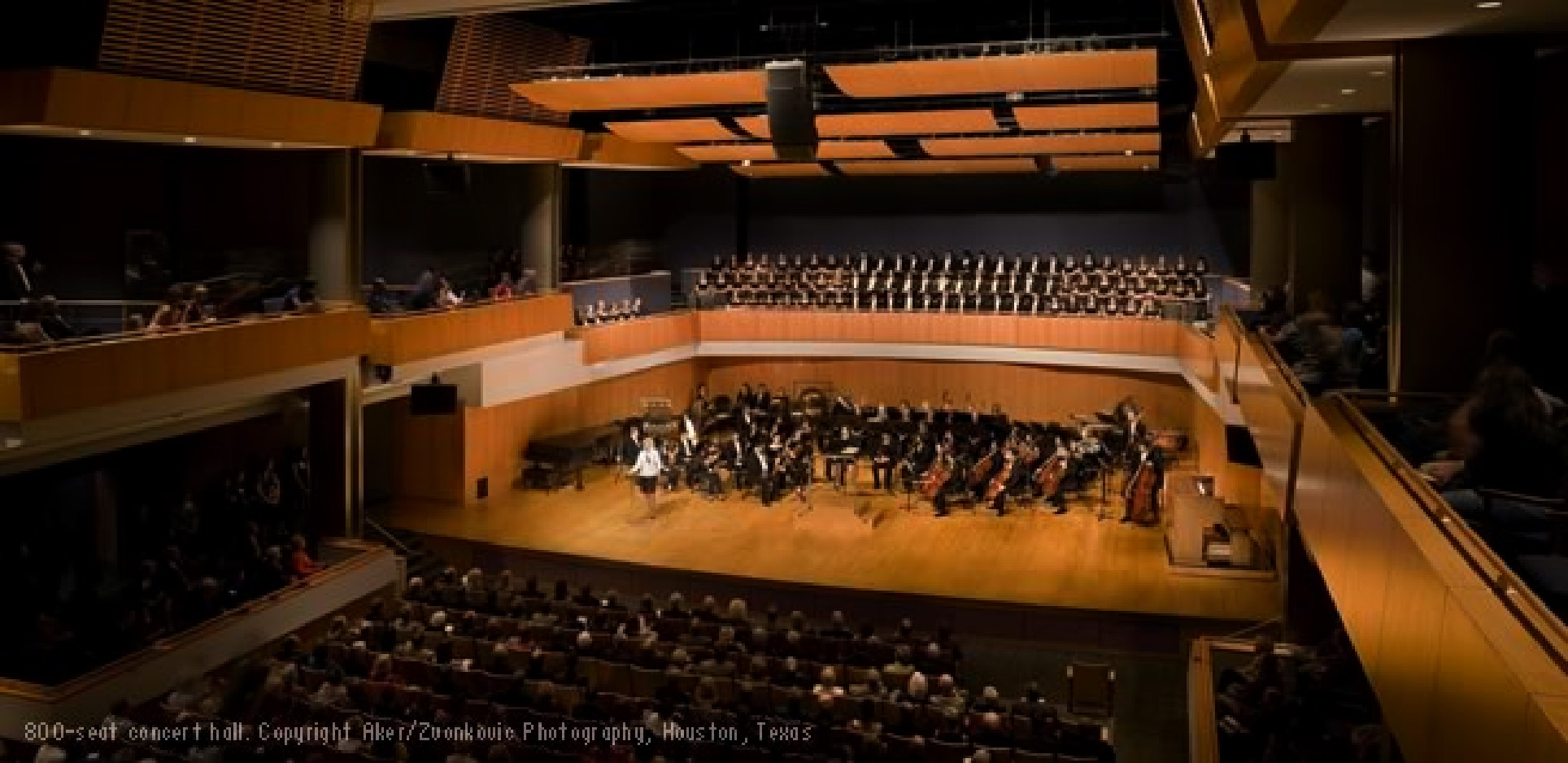Project Summary
While it might not stand out on the jobsite, building information modeling (BIM) software helped Haynes Whaley Associates deliver a complex project faster and with more productive collaboration. Since 1976, the firm has contributed to numerous projects, such as The Menil Collection, the Brochstein Pavilion, and the Hobby Center for the Performing Arts. Haynes Whaley adopted Autodesk® Revit® Structure BIM software in 2005, and in 2006 began using Revit Structure as a tool to deliver projects faster.
The Challenge
One of the firm’s first opportunities to work with the software was a new academic building at Sam Houston State University (SHSU) in Huntsville, Texas. Haynes Whaley used the BIM process and an intelligent, 3D structural model alongside WHR Architects and SpawGlass, general contractors.
SHSU later selected the team to design the $38.5 million James and Nancy Gaertner Performing Arts Center (PAC) which included an 800-seat concert hall.
The Solution
Haynes Whaley used Revit Structure, while WHR Architects used Autodesk® Revit® Architecture software. SpawGlass used Revit Architecture, Autodesk® Revit® MEP, and Autodesk® Navisworks software, as well as BIM solutions from Innovaya. Early integration of the models was vital, since the project involved a steeply sloping site and two existing, adjacent buildings.
As a result, Haynes Whaley’s structural model proved to be especially helpful to the rest of the team.
Deliver Projects Faster
Haynes Whaley provided preliminary structural drawings and a working model in just two weeks versus a more customary six. The engineers also enhanced the structural sets with numerous views, including 3D isometric views.
At working design meetings, team members used the model to more easily visualize the facility’s structural system and identify problem areas.
Reduce Costly Construction Conflicts
Coordination-related conflicts were significantly minimized during the construction phase.
Using the Revit® models helped with numerous aspects of the project and increased overall constructability. On site, the concrete subcontractor could see details in multiple views and more easily lay out the wall despite multiple grade changes and complex interfaces.
As a result, the team avoided many errors on site, saving considerable time and greatly reducing cost overruns.
BIM also helped contractors link data from the model with scheduling software, which let the team depict construction sequencing in step-by-step, 4D graphic representations.
Involvement in the early design process helped the architects better understand how structure would impact their configurations and better utilize space.
Haynes Whaley also used the Revit model to communicate multiple scenarios to optimize construction sequencing.
Additionally, SpawGlass maintained an online BIM portal where team members could store and update their models during any phase of the project. The owner could also monitor the project’s status on the portal.
The Result
Revit software and the BIM process helped deliver a higher-quality product, including an integrated information package containing hyperlinks to the various submittals.
More importantly, the owner benefited and had greater – and earlier – insight into the project, much earlier in the process.
The Future
Haynes Whaley intends to continue investing in the BIM process to save time and money.






